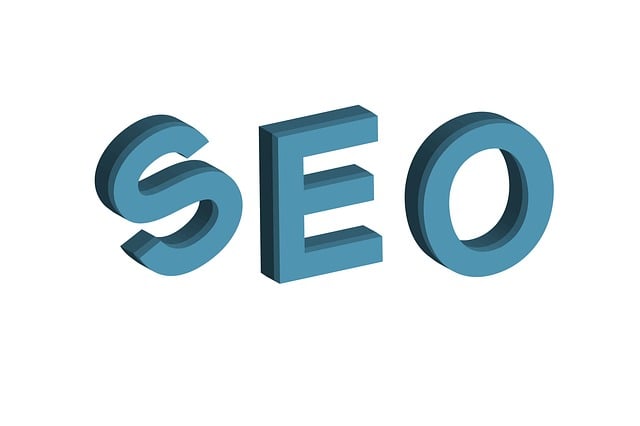Adopting White-Hat SEO Techniques is crucial for long-term digital marketing success. This ethical approach focuses on creating high-quality content, optimizing site structure, and building genuine links from authoritative sources to enhance user experience and drive organic traffic. By prioritizing integrity, these techniques ensure compliance with search engine guidelines, avoid penalties, and build trust, resulting in improved rankings, increased traffic, and a robust online presence that adapts to algorithm updates. Key practices include keyword research, mobile optimization, fast loading, structured navigation, and avoiding deceptive tactics like keyword stuffing or link farming. This sustainable approach fosters user trust and long-term competitiveness in the dynamic digital landscape.
In an era where digital visibility is key, understanding Ethical Search Engine Optimization (SEO) becomes indispensable for businesses aiming for long-term success. This article delves into the foundational principles of ethical SEO, highlighting the paramount importance of White-Hat SEO techniques in navigating the complex landscape of search engine rankings. From on-page content optimization to user experience design, we explore key practices that foster genuine growth and avoid the pitfalls of Black-Hat tactics. Embrace these strategies for a robust and sustainable online presence.
Understanding Ethical SEO: A Foundation for Long-Term Success

Understanding Ethical SEO forms the bedrock for any successful and sustainable digital marketing strategy. It involves implementing proven, long-lasting White-Hat SEO Techniques that align with search engine guidelines, ensuring your website remains compliant as search algorithms evolve. By adopting ethical practices, you avoid the pitfalls of black-hat methods, which can lead to penalties and temporary gains that quickly dissipate.
This foundational approach focuses on delivering value to users by creating high-quality content, optimizing site structure for better navigation, and building genuine links from authoritative sources. Such strategies not only help search engines understand your website’s purpose but also enhance the user experience, driving organic traffic and fostering a loyal audience over time.
The Role of White-Hat Techniques in Search Engine Optimization

White-hat techniques form the backbone of ethical Search Engine Optimization (SEO), emphasizing integrity and long-term sustainability over quick fixes or shortcuts. These strategies focus on delivering valuable content to users while adhering to search engine guidelines, ensuring that websites remain relevant, trustworthy, and high in quality. Techniques such as keyword research, where relevant terms are identified to accurately describe a site’s content, play a pivotal role in enhancing visibility without manipulation.
By prioritizing user experience, including optimizing for mobile devices, improving page loading speeds, and creating structured, easy-to-navigate content, white-hat SEO ensures search engines can efficiently crawl and index pages. This approach fosters trust between websites and search engines, leading to better rankings, increased organic traffic, and a more robust online presence that resonates with both users and search algorithm updates.
Key Principles of Ethical Search Engine Marketing Practices

The foundation of ethical search engine optimization (SEO) lies in adhering to white-hat SEO techniques, prioritizing integrity and long-term sustainability over quick fixes or deceptive tactics. These principles ensure that websites climb the ranks organically, appealing to both search engines and users’ trust. Key practices include conducting thorough keyword research to understand audience intent, creating high-quality content that provides genuine value, and optimizing technical aspects of a site without misleading or hiding information from search crawlers.
White-hat SEO fosters transparency by avoiding black-hat techniques such as keyword stuffing, link farming, or using hidden text. Instead, it focuses on building legitimate authority through earnestly satisfying user needs. This involves implementing effective internal linking structures, earning quality backlinks from reputable sources, and ensuring mobile responsiveness, fast loading times, and a seamless user experience across all devices.
On-Page SEO: Implementing White-Hat Strategies for Content Optimization

On-Page SEO involves implementing white-hat strategies to optimize content, ensuring search engines can understand and rank pages accurately. This includes using relevant keywords naturally throughout your content, creating high-quality, informative copy that provides real value to users, and structuring your HTML elements effectively with proper use of headers, meta tags, and alt attributes for images. These practices not only help search engines crawl and index your site better but also enhance the user experience, leading to lower bounce rates and increased engagement.
White-hat SEO techniques prioritize long-term sustainability over quick fixes. They involve careful keyword research to identify terms relevant to your niche and audience, strategic placement of keywords in titles, headings, and body text, and creating internal links that guide users and search engines through your site’s hierarchy. By focusing on these methods, you build a solid foundation for organic search visibility, ensuring your website remains competitive and relevant in the ever-evolving digital landscape.
Off-Page SEO: Building Reputable Backlinks and Authority

Off-Page SEO focuses on strategies outside your website to enhance its search rankings. One of the key components is building reputable backlinks from high-authority sites, a process that boosts your site’s credibility and authority in the eyes of search engines. This involves employing White-Hat SEO Techniques such as guest blogging, where you contribute valuable content to other websites, or creating informative resources that naturally attract links from relevant sites.
The quality and relevance of backlinks are paramount. Search engines like Google use algorithms to analyze these links, ensuring they originate from trustworthy sources. By acquiring backlinks from authoritative websites within your niche, you signal to search engines that your site is a valuable resource, leading to improved rankings and increased organic traffic.
User Experience and Ethical Website Design Considerations

In the realm of Ethical Search Engine Optimization (SEO), prioritizing user experience is paramount. When implementing White-Hat SEO Techniques, website design plays a crucial role in fostering positive interactions and encouraging visitors to explore further. Considerable effort should be invested in creating intuitive navigation structures, ensuring fast page loading times, and optimizing for mobile compatibility. These factors not only enhance usability but also serve as critical signals to search engines, demonstrating a commitment to providing value to users.
Designing with the user’s needs in mind translates into decreased bounce rates and increased time spent on-site, both of which are favorable metrics for SEO. Ethical website design involves balancing aesthetics with functionality, ensuring that visual appeal doesn’t come at the expense of usability. By integrating user-centric principles, websites become more engaging, encouraging visitors to interact, share, and ultimately, convert, thereby boosting overall online success in an organic and sustainable manner.
Avoiding Black-Hat Tactics: Risks and Consequences

In the pursuit of boosting search engine rankings, it’s tempting for some businesses to turn to Black-Hat SEO Tactics. These involve unethical practices aimed at manipulating search results, such as keyword stuffing, hidden content, or purchasing links. While they might offer short-term gains, employing these tactics comes with significant risks and consequences. Not only can search engines like Google penalize websites caught using these methods, but it also damages the brand’s reputation and erodes user trust.
Adhering to White-Hat SEO Techniques is a more sustainable and ethical approach. These techniques focus on creating valuable content that satisfies user intent, improving website architecture for better navigation, and building high-quality backlinks through genuine collaborations and efforts. By prioritizing these methods, businesses can achieve long-term success in search engine optimization without compromising their integrity or facing harsh penalties.
Measuring Success: Ethical KPIs and Performance Evaluation

Measuring success in Ethical Search Engine Optimization (SEO) involves adopting a set of key performance indicators (KPIs) that prioritize long-term sustainability and user experience over quick wins. Unlike Black-Hat SEO techniques that focus on manipulative strategies, White-Hat SEO Techniques emphasize natural, ethical methods to boost visibility and drive organic traffic. KPIs for ethical SEO should include metrics like organic search rankings, click-through rates (CTRs), average session duration, bounce rate, and conversion rate. These indicators provide a holistic view of website performance by focusing not just on attracting visitors but also on keeping them engaged and converting them into customers or subscribers.
Performance evaluation in ethical SEO requires regular analysis and adjustments to these KPIs. Tools like Google Analytics and Search Console offer valuable insights into user behavior, keyword rankings, and site performance. By continually monitoring these metrics, SEO practitioners can identify areas for improvement, refine content strategies, optimize website structure, and enhance overall user experience. This data-driven approach ensures that SEO efforts remain aligned with ethical guidelines and deliver measurable results without compromising the integrity of search engine algorithms or user trust.
